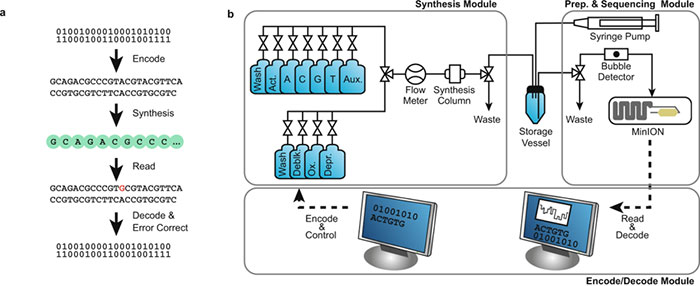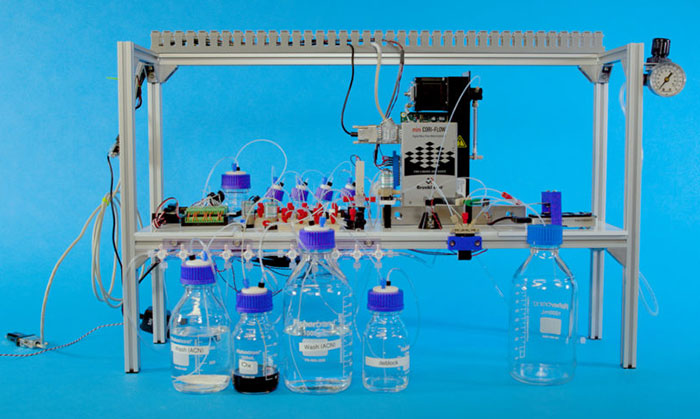https://m.hexus.net/tech/news/storage/128825-microsoft-unveils-automated-dna-storage-retrieval-system/
Researchers from Microsoft and the University of Washington have been working on DNA data storage for a number of years now. Back in 2016, HEXUS reported upon the collaborating research partners setting a record for DNA data storage and earlier the same year Microsoft showed some intent by signing a big contractwith a synthetic DNA production company. The most recent HEXUS article about DNA storage, from 2017, suggests that DNA is the answer to our ever growing storage needs as up to 215 petabytes of data can be encoded in a single gram of this molecular material. Furthermore, DNA can last much longer than current archival storage technologies.
Microsoft and UW provided an update on their progress in the field of DNA storage a couple of days ago, sharing a blog post and video about the world’s first fully automated DNA data storage system. The system, pictured below, doesn’t look much like any storage device I have seen before but only forms a “simple proof-of-concept test” of the technology working – melding the organic molecular and electronic worlds. Automation is a very important part of any data storage / retrieval system and this is what the above embedded video and accompanying blog concentrates upon.
—
While the researchers sound very pleased with themselves for designing the automated DNA storage and retrieval system it is currently very slow. In a demonstration of the system, a 5-byte message ‘HELLO’ (01001000 01000101 01001100 01001100 01001111 in bits) was encoded, stored, and then decoded in 21 hours. This performance is described as “not yet commercially viable,” in the full Nature published white paper. However, the researchers say that they are expecting near-term improvements on synthesis, cycle count, and cost. We are asked to remember that “the goal of the project was not to prove how fast or inexpensively the system could work… but simply to demonstrate that automation is possible”.
—

